Top winter golf survival tips
Published: Last updated:
How to enjoy your golf and play better over the cold months.
We’ve never had it better when it comes to playing now. Courses tend to be quieter; There are some fabulous deals to be found; There’s a ton of gear designed to help you play better at this time of year…
FIND THE BEST GEAR FOR WINTER IN OUR ULTIMATE GOLF CLUB GUIDE
CHECK OUT OUR BEST 2-FORE-1 WINTER GOLF COURSES HERE
1. Check your ego… play ‘realistic par’ golf

You’re not Rory McIlroy, and one of the game’s greatest mind coaches has a newsflash for you. “It is unrealistic to think that you are going to go out there and shoot under your handicap when the greens are rubbish and the weather is awful,” reveals Dr Karl Morris. “Subsequently, at this time of year, I always sit down with my clients and discuss the concept of ‘realistic par’.
This basically means I want golfers to stop thinking that their course is the same par all year round and start thinking about adding strokes onto par to make up for the course’s conditions during the winter months.
“As a general rule, given the state of British courses between November and February and the harshness of our weather, I don’t think it’s unreasonable for us to add two strokes on to the par of the course for each nine, making a par-68 course a par 72 and so on.
“The point of this isn’t to be defeatist, it’s to increase your chances of a confidence-boosting winter by being realistic.”
Still not convinced? Try this revelation for size. “As a mental process, realistic par is very similar to the ‘Tiger Par’ concept Earl Woods developed when Tiger was growing up,” reveals Morris.
“The idea behind ‘Tiger Par’ was that Tiger was too young to beat par, so instead of continually trying to do this and losing, he focused on trying to beat a realistic score that they would call ‘Tiger Par’.
2. Have a go on a golf simulator

The evenings may be dark, but you can still play St Andrews and Pebble Beach at plenty of indoor venues around the country. The putting might be a bit hit and miss, but indoor simulators are great for driving and iron shots.
3. Make the most of winter greens

We’re serious. Temporary greens might not help your putting, but they can assist other areas of your game. “Because they are smaller winter greens definitely place more emphasis on distance control,” says PGA pro and TG teacher Steven Orr (www.stevenorrcoaching.com). “This helps your iron play and your focus, as aiming for smaller targets forces us to think about the shot more.
Another benefit of winter greens is their position. They tend to be in front of the actual green, reducing the yardage of the course and ensuring that we all hit shorter irons into the target. This allows us to improve our wedge play without even realising it.”
FIND AN AFFORDABLE GOLF COURSE NEAR YOU HERE
4. Try a high-vis yellow golf ball

Not so long ago, yellow balls were the preserve of driving ranges and rock-hard budget balls. But now the likes of Titleist, Srixon, Bridgestone and Wilson offer some of their premium models in yellow.
Serious golfers tend to stay away from yellow golf balls, but they perform just the same as white ones and are easier to spot among leaves or frost.
Dean Cracknell, Srixon Golf’s Custom-Fit Manager, told us: “Science has proven that yellow is the most visible colour in the spectrum allowing it to be seen extremely easily even at long distances.
“Psychological studies have also correlated the colour green with calmness and reduced stress. That’s why our Tour Yellow balls are predominantly yellow with a touch of green, to provide this calming effect.”
Srixon’s designers conducted extensive visibility testing to determine how much easier it is for players to see the Tour Yellow golf ball compared to the Pure White version, and at 225 yards the Tour Yellow golf ball was twice as easy to see as white.
5. Keep your body warm and working

“Whatever you do, don’t drink alcohol,” says top nutritionist Drew Price (follow him @drewtrition).
“Booze is the last thing you want in your veins as it will lower your core and peripheral body temperature. Instead, the trick is to increase your metabolism by taking in food or drink that stimulate the nervous system or get the body to work a bit harder. A couple of cups of strong coffee will do this, but other good options include: green tea, which raises the body temperature and is thought to benefit your blood pressure (drink two or three cups an hour before the round).
Coconut milk, which raises body temperature and helps you to maintain your energy levels throughout the round (consume 100-200ml about an hour before the round). And protein, which raises body temperature (eat 150g of lean red meat, chicken or pork or drink a 30g protein shake an hour before your round).”
6. Follow your ball into the sun

“I’ve tracked many shots into the rising and setting sun and my advice is basic, but works like a charm,” says John Dunn, a long-term caddie and author of Loopers: A Caddie’s Twenty-Year Golf Odyssey. “Track the ball from the moment it takes off until just before it reaches the heart of the sun. Now, instead of continuing to follow it, and losing it, turn your attention to the spot where you think it will land; you’ll soon see it come into view.”
7. Add loft to your driver

“Winter is really when driver adjustability comes into its own,” said one of TaylorMade’s Fitting Lab manager at Wentworth.
“More loft means more carry and more distance, so get along to your pro and find out what will give you the best driver head/shaft combo. You really should go to your pros to learn about adjustability.”
8. Take advantage of winter rules

The R&A’s Assistant Director Rules, Kevin Barker, explains the four golf rules you need to remember this winter.
Preferred lies
“There is a lot of confusion with this one,” warns Barker. “Preferred lies is not something that comes in automatically at the start of October and runs until the end of March. It is a local rule, so for it to apply the golf club’s committee has to put it into operation. Also, when they do put it in place they need to specify how far the player is allowed to prefer the lie. The three potential options listed in the rules are: six inches, a scorecard length and a club length, so make sure you find out which applies before beginning your round. If you don’t and you move the ball further than the allowable distance you will be subject to a two-stroke penalty.
“Further to this, when you are on a closely mown area and ready to give yourself a preferred lie you need to mark your ball before picking it up or you will incur a one-shot penalty. Finally, you have to pick the ball up rather than moving it with a club and you are only allowed to prefer your lie once each time.”
Embedded ball
“This is another rule that you need to check before setting out,” says Barker. “Under the normal rules of golf you get relief if your ball is embedded in a closely mown area through the green. This means you are not entitled to free relief when your ball is embedded in the rough. There is, however, a local rule that allows clubs to extend free relief to anywhere through the green in extremely poor conditions. If this rule is in place, then you are entitled to free relief in the rough.”
Cleaning the ball
“When conditions are bad enough that your ball is picking up dirt, but not quite poor enough to merit preferred lies, clubs often invoke this local rule,” says Barker. “It allows you to lift your ball and clean it before playing your next shot. All balls have to be marked before being lifted and replaced in the exact same spot after cleaning.”
Casual water
“Stop jumping up and down,” pleads Barker. “This rule does not allow you to get free relief if the force of your body causes water to come out of the ground. It entitles you to free relief if water is visible under your feet or the ball when you make your normal stance. If it is, then you are allowed to drop the ball within one club length of your nearest point of relief. If it’s not, then you have to play the ball as it lies.”
9. Start getting your golf in shape for spring

“There are many reasons to keep playing and working on your game during the winter months,” says TG pro Steven Orr (www.stevenorrcoaching.com). “From a playing perspective, playing in different and challenging weather teaches you how to adapt to conditions, which is a crucial part of being a great golfer.
If you play in perfect weather all the time, you only learn to hit one iron, one distance. But if you play in wind and rain and cold, you learn to hit a pitching wedge 120 yards when it is blowing a gale downwind and a 4-iron 120 yards when it is snowing and blowing a gale towards you.
“Also, from an overall game perspective, winter allows you time to practice without worrying about your score or result. In summer, you’re always playing competitions or matches. In winter, this isn’t the case, so you have the space to work on the weak areas of your game. With this in mind, my advice to all readers is: work out what areas of your game you need to improve and then get down to the range and start working on them. If you get out of your house and do this, you’ll make next year your best year yet.”
10. Introduce a friend to golf

World champion triathletes Alistair and Jonny Brownlee always train together. Why? Two reasons. It inspires them, and it’s far tougher to back out if you know someone else will be there.
Conclusion? If you want to keep working on your game this winter, don’t do it alone – ask that friend who has been making noises about trying golf to come with you. Their presence will entertain and inspire you, and then who knows? Come spring you might just have a new partner.
11. Enter the competitions that are still happening

Well don’t just sit there… Find out which ones you can enter by visiting your local club.
-
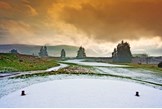
-
 Enter the competitions that are still happening
Enter the competitions that are still happening
-
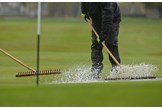 Make the most of winter greens
Make the most of winter greens
-
 Introduce a friend to golf
Introduce a friend to golf
-
 Start getting in shape for spring
Start getting in shape for spring
-
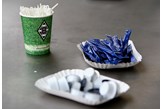 Keep your body warm and working
Keep your body warm and working
-
 Follow your ball into the sun
Follow your ball into the sun
-
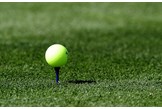 Try a high-vis yellow golf ball
Try a high-vis yellow golf ball
-
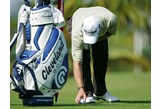 Preferred lies
Preferred lies
-
 Add loft to your driver
Add loft to your driver
-
 Winter golf: Rory McIlroy
Winter golf: Rory McIlroy
-
 Have a go on a golf simulator
Have a go on a golf simulator
